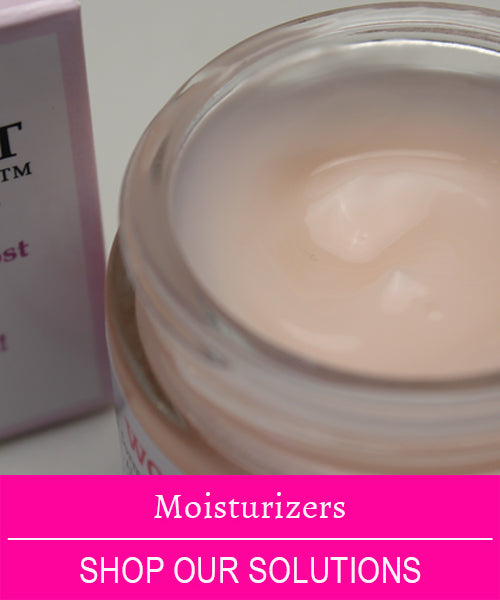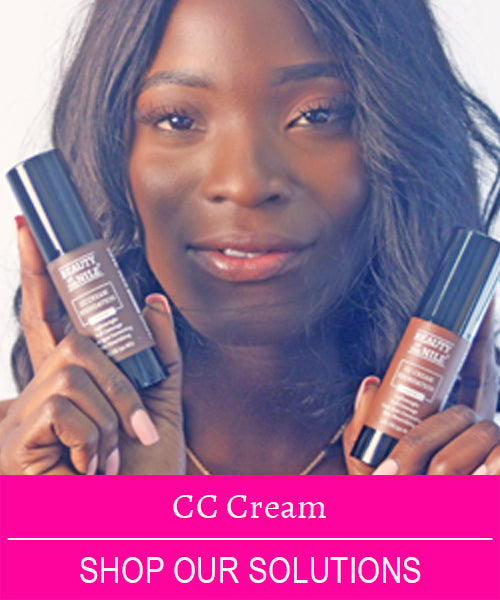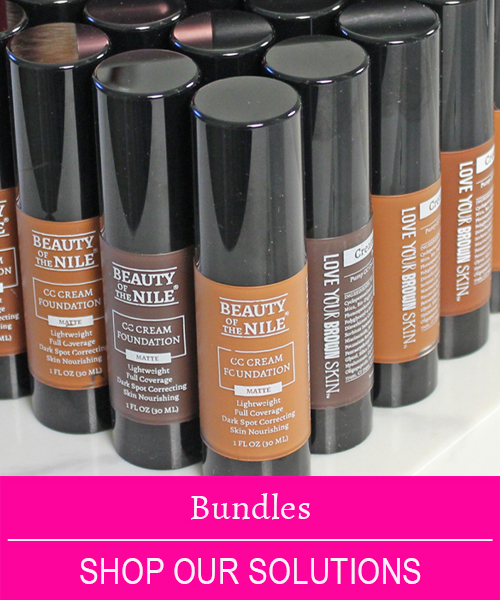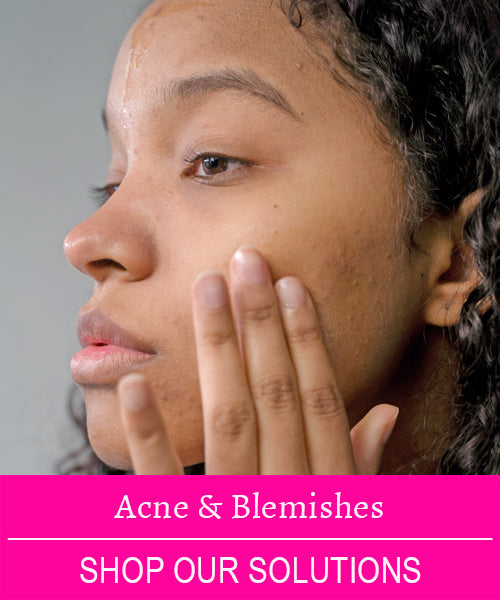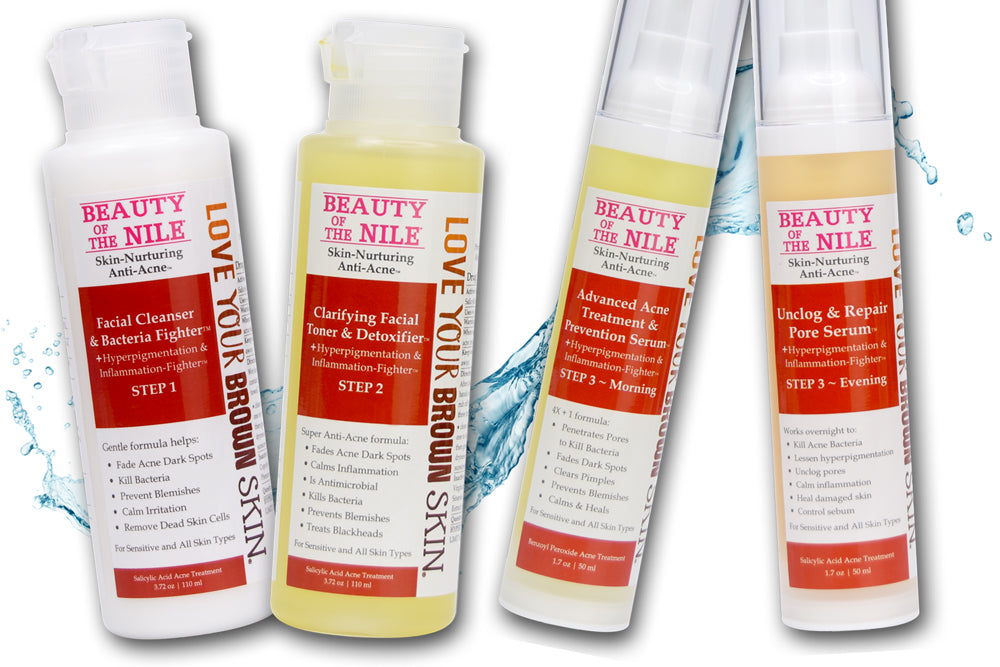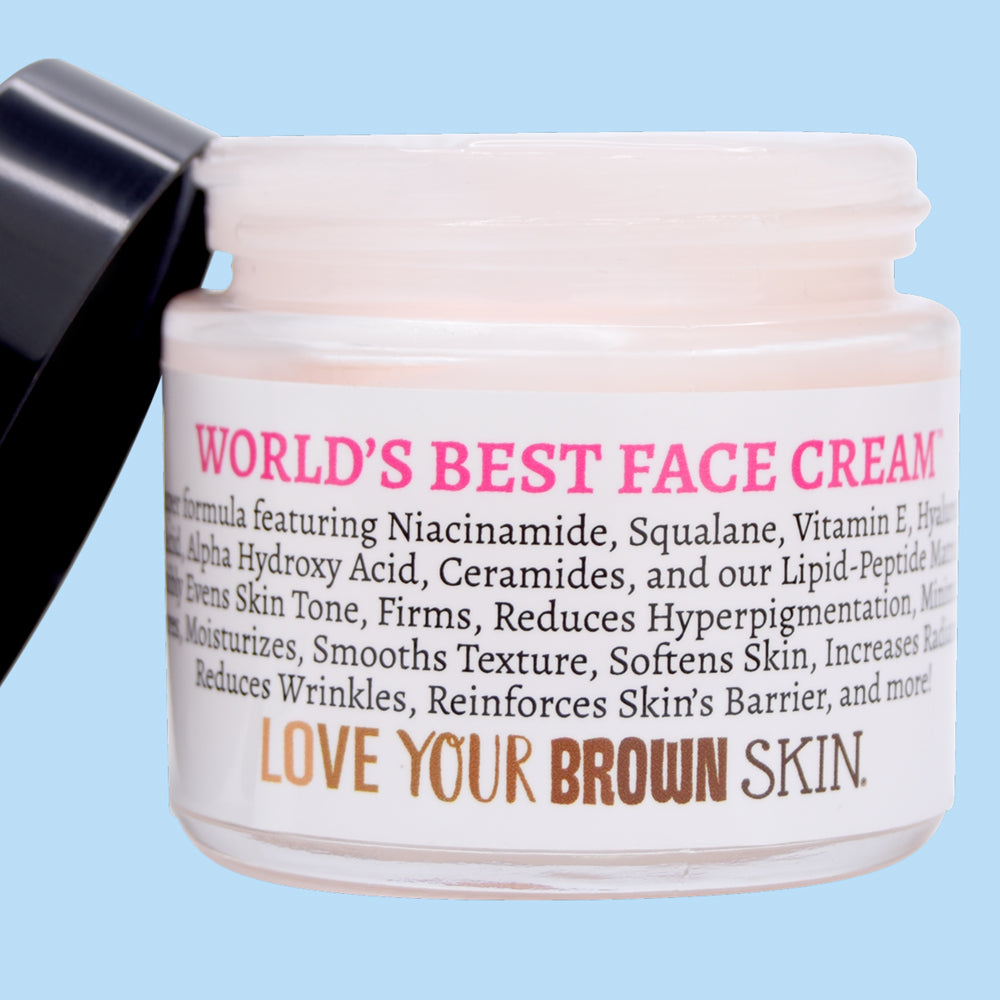Is Your Skin Dry or Dehydrated?
Here’s How to Tell the Difference Between Dry and Dehydrated Skin and What It Means for Your Skin’s Health
Proper skin care is essential for maintaining healthy, radiant skin. However, it's important to know whether your skin is dry or dehydrated, as the causes, preventative skin care routines, and treatment methods differ. In this article, we'll explore how to differentiate between dry and dehydrated skin and provide you with practical steps to address each condition. Let's dive in!
RESEARCH SAYS…
Studies suggest that people with darker skin may lose more moisture from their skin in general. This means black and brown skin may be more prone to being dry. The National Eczema Association also suggests that skin-of-color is often drier than lighter skin.*
Dry Skin
Dry skin refers to a skin type that lacks sufficient oil production, resulting in a compromised moisture barrier. It often feels rough, flaky, and may appear dull or scaly. Dry skin is prone to tightness, itching, and discomfort, especially in harsh weather conditions. It is primarily caused by genetic factors, hormonal changes, aging, environmental factors, or excessive use of drying skin care products.
Here are steps to take if you have dry skin:
-
Hydrate from within:
- Drink an adequate amount of water daily (aim for 8 cups, or 64 ounces).
- Incorporate hydrating foods into your diet, such as fruits, vegetables, and foods rich in omega-3 fatty acids.
-
Use a gentle cleanser:
- Opt for a mild, non-drying cleanser that doesn't strip away natural oils.
- Avoid harsh soaps or cleansers with fragrances that can further dry out your skin.
-
Moisturize regularly:
- Choose a rich, nourishing moisturizer specifically formulated for dry skin.
- Apply moisturizer twice a day, focusing on areas prone to dryness, like the face, elbows, knees, and your heels & feet.
-
Protect your skin:
- Shield your skin from harsh weather conditions by wearing protective clothing, like scarves or gloves.
- Use a broad-spectrum sunscreen with SPF 30 or higher to protect against UV damage.
-
Limit hot showers and baths:
- Hot water can strip your skin of its natural oils, exacerbating dryness.
- Opt for lukewarm water and limit your bathing time to avoid excessive drying of your skin.
RESEACH SAYS…
The outer layer of your skin contains ceramides, fatty acids that help retain moisture in your skin and keep germs out. Research from 2016 suggests that people with darker skin may have fewer ceramides than people with lighter skin.**
Dehydrated Skin
With dehydrated skin, you might be more prone to dark under-eye circles!
There. I said it. Now that I have your attention:
Dehydrated skin is a condition that occurs when the skin lacks water content rather than oil. It can affect any skin type, including oily or combination skin. Dehydrated skin often appears dull, tight, and may show fine lines and wrinkles.
Factors like inadequate water intake, excessive caffeine or alcohol consumption, environmental factors (such as dry air or harsh weather), and using harsh skin care products can contribute to skin dehydration. Unlike dry skin, which is a skin type, dehydration is a temporary condition that can be resolved with proper hydration and skin care practices.
Here's how to address dehydrated skin:
-
Increase water intake:
- Drink plenty of water throughout the day to replenish moisture from within.
- Consider incorporating herbal teas or infused water for added hydration benefits.
-
Use a hydrating cleanser:
- Look for gentle cleansers that hydrate and help retain moisture.
- Avoid cleansers with harsh ingredients like sulfates that can strip away natural hydration.
-
Hyaluronic acid and humectants:
- Incorporate skin care products containing hyaluronic acid or humectants, as they attract and retain moisture in the skin.
- Apply serums or moisturizers with these ingredients to boost hydration levels.
-
Regular exfoliation:
- Exfoliate gently to remove dead skin cells and allow better absorption of hydrating products.
- Use a mild exfoliant suited for your skin type and follow the recommended frequency.
-
Humidify your environment:
- Use a humidifier in dry indoor environments, especially during the winter months.
- This helps maintain a more balanced moisture level in the air, benefiting your skin.
Understanding the difference between dry and dehydrated skin is crucial for developing an effective skin care routine. By following the steps outlined above, you can address the specific needs of your skin and promote your best skin health. Remember to be consistent and patient, as it may take time to restore and maintain your skin's moisture balance.
RESEARCH SAYS…
Although people with dark skin may have more of other types of lipids on their skin (like sebum), the lower amount of ceramides may cause dry skin. Pores on dry skin can easily clog with built-up keratin.*
It's important to note that dry and dehydrated skin can coexist, as they have different underlying causes. If you're unsure about your skin type, it's recommended to consult a dermatologist for a proper diagnosis and personalized recommendations.
Is Your Skin Dry or Dehydrated?
You can perform some simple observations and self-assessments to help determine the condition of your skin. Here are a few methods to test for dry skin versus dehydrated skin:
- Visual Examination: Look closely at your skin in natural light and assess its overall appearance. Dry skin tends to have a rough, flaky texture and may appear dull or scaly. Dehydrated skin, on the other hand, can look tight, lackluster, and may show fine lines and wrinkles.
- Pinch Test: Gently pinch a small area of your skin, such as the back of your hand or forearm. If it takes longer for the skin to return to its normal position, and it feels dry, you might have dry skin. If the skin quickly bounces back but still feels tight, it could indicate dehydration.
- Skin Sensations: Pay attention to how your skin feels. Dry skin often feels rough, itchy, and may experience discomfort or irritation. Dehydrated skin can feel tight, especially after cleansing or exposure to dry environments.
- Skin Type Assessment: Consider your overall skin type. Dry skin is a skin type characterized by insufficient oil production, while dehydrated skin is a condition that can affect any skin type, including oily or combination skin.
- Consider External Factors: Assess environmental factors and lifestyle habits. If your skin worsens in dry or cold climates, it could be a sign of dry skin. If your skin feels tight and dull after exposure to air conditioning, heating, or excessive sun exposure, it may be more indicative of dehydration.
These tests provide general indications, but for a more accurate diagnosis, it's always best to consult with a dermatologist who can examine your skin and provide personalized advice based on your specific needs.
Does Dehydrated Skin Age Faster?
Dehydrated skin increases the appearance of fine lines and wrinkles due to the lack of moisture. Here are some bullet points to clarify the relationship between dehydration and aging:
- Dehydrated skin can make fine lines and wrinkles appear more prominent, giving the illusion of premature aging.
- Without sufficient hydration, the skin's natural plumpness and elasticity can diminish, contributing to the development of wrinkles.
- Dehydration can lead to a loss of skin firmness and elasticity, which are important factors in maintaining a youthful appearance.
- While dehydration can exacerbate the signs of aging, it is not the primary cause of skin aging. Other factors such as sun exposure, genetics, lifestyle choices, and environmental factors play significant roles in the aging process.
- Proper hydration and skin care practices can help improve the appearance of dehydrated skin, reducing the visible signs of aging and promoting a more youthful look.
It's important to note that all skin types, whether dry, oily, or normal, can experience dehydration. Therefore, maintaining adequate hydration is crucial for overall skin health, to minimize visible signs of aging, and to maintain your most youthful appearance.
The Bottom-Line
Understanding the difference between dry and dehydrated skin is the first step towards achieving healthier, radiant skin. By recognizing the unique needs of your skin and implementing the appropriate steps, you can nurture and restore its natural moisture balance. Whether your skin is dry or dehydrated, remember that positive change is within your grasp. Embrace a hydrating lifestyle, nourish your skin with the right products, and prioritize self-care. With consistency and patience, you'll soon witness the transformative power of a well-hydrated and cared-for complexion.
And, always Love Your Brown Skin®

Sources: *Healthline.com **National Institutes of Health


